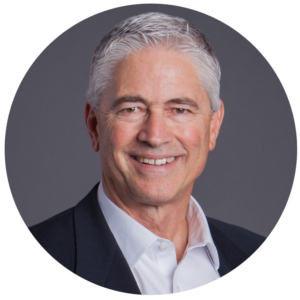Pathway to Remediation Success: A Next-Generation Approach to Complex Contaminated Sites
In this webinar we are pleased to have as special guest speakers John Hesemann, Remediation Technical Practice Leader, and Rick Cramer, Environmental Sequence Stratigraphy Practice Leader of Burns & McDonnell. Their presentation discusses the next generation approach to tackling remediation of complex contaminated sites. They are joined by Craig Sandefur, Vice President of Technical Services at REGENESIS, who discusses Design Verification Testing (DVT) activities to improve performance results and reduce project costs at contaminated sites.
Highlights of this free webinar:
- Learn how a focus on Remediation Geology defines the “static” subsurface framework that is the primary control on subsurface fluid dynamics.
- And how this, combined with improved understanding of subsurface processes, results in a Process-Based CSM that informs all stages of the remediation life cycle.
- Case studies presented will show how this approach applies to all complex sites, regardless of location, contaminant, and subsurface conditions.
View the recording of this free webinar
About the Presenters
 Rick Cramer, PG
Rick Cramer, PG
CA Remediation Department Manager, Burns & McDonnell
Rick Cramer is a California licensed Professional Geologist (PG) with over 30 years of environmental experience, and serves as the Remediation Department Manager and Environmental Sequence Stratigraphy Practice Lead with Burns & McDonnell out of their Brea, California office. Rick has a BS degree in geology from University of the Pacific and a MS degree in geology from University of California, Davis. He began his professional career in the petroleum industry, and pioneered the application of sequence stratigraphy to groundwater projects.
 John Hesemann, PE
John Hesemann, PE
Remediation Technical Practice Leader, Burns & McDonnell
John is a Licensed Professional Engineer (PE) with over 21 years of environmental experience, and serves as Burns & McDonnell’s Remediation Technical Practice Leader for Environmental Division. John earned B.S. and M.S. degrees in Geological Engineering from the Missouri University of Science and Technology and is a licensed professional engineer in the states of Connecticut, Illinois, Kansas, Louisiana, Massachusetts, Missouri, and Oklahoma. He has personally led or supported over 100 remediation projects in 17 states, mostly for industrial clients managing risks associated with chlorinated solvents, petroleum compounds, and other recalcitrant contaminants. As Burns & McDonnell’s Remediation Technical Practice Leader, John leads groups of remediation professionals and practitioners dedicated to developing and implementing effective solutions for private and public sector clients.
 Craig Sandefur
Craig Sandefur
Vice President of Remedial Applications Development, REGENESIS
Craig Sandefur is the Vice President of Remedial Applications Development at REGENESIS and a recognized expert with over 20 years of experience in the areas of in situ remedial design and applications. In his current role at REGENESIS, Mr. Sandefur is part of team of geologists located throughout the United States that provide remediation designs and optimize performance for REGENESIS clients. Under his direction, the Technical Services team at REGENESIS developed a Design Verification Testing (DVT) program, which consists of a suite of field sampling and testing activities carried out prior to subsurface remedial reagent emplacement. The DVT program at REGENESIS has also pioneered the use of Passive Flux Meters (PFM) in conjunction with contaminant plume aspect ratio analysis. This program has directly informed REGENESIS design and application teams, resulting in significant improvements in remedial reagent emplacement, project remedial outcomes and project cost reductions.

 Americas
Americas Europe
Europe Français
Français Deutsch
Deutsch Italiano
Italiano Español
Español
